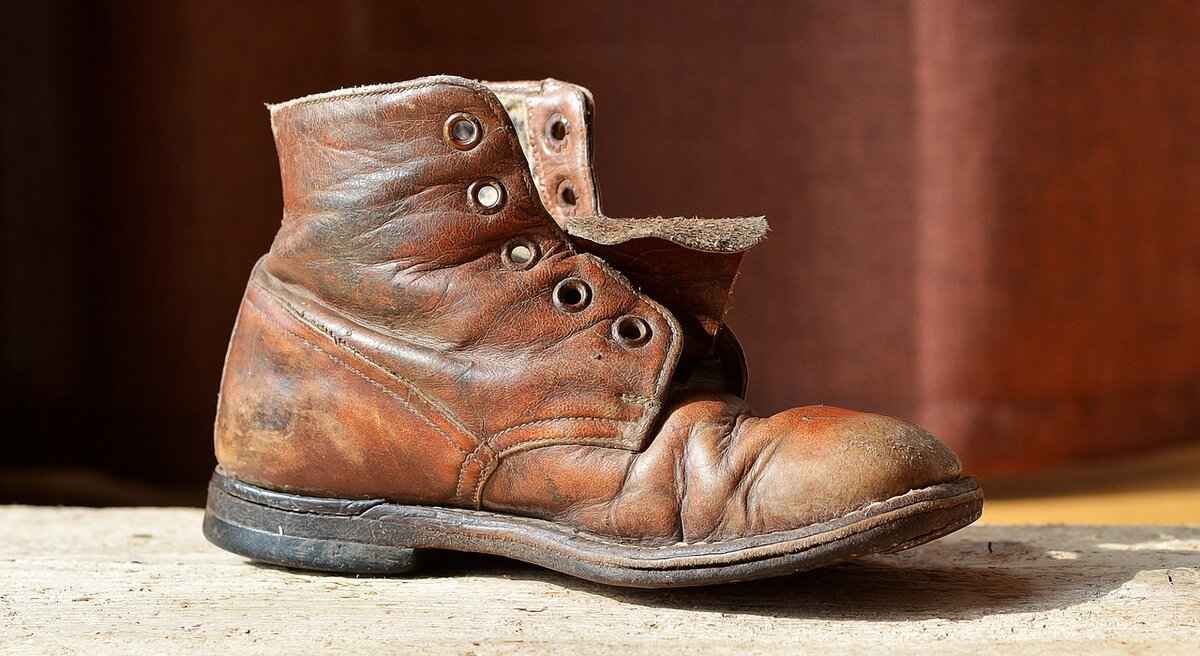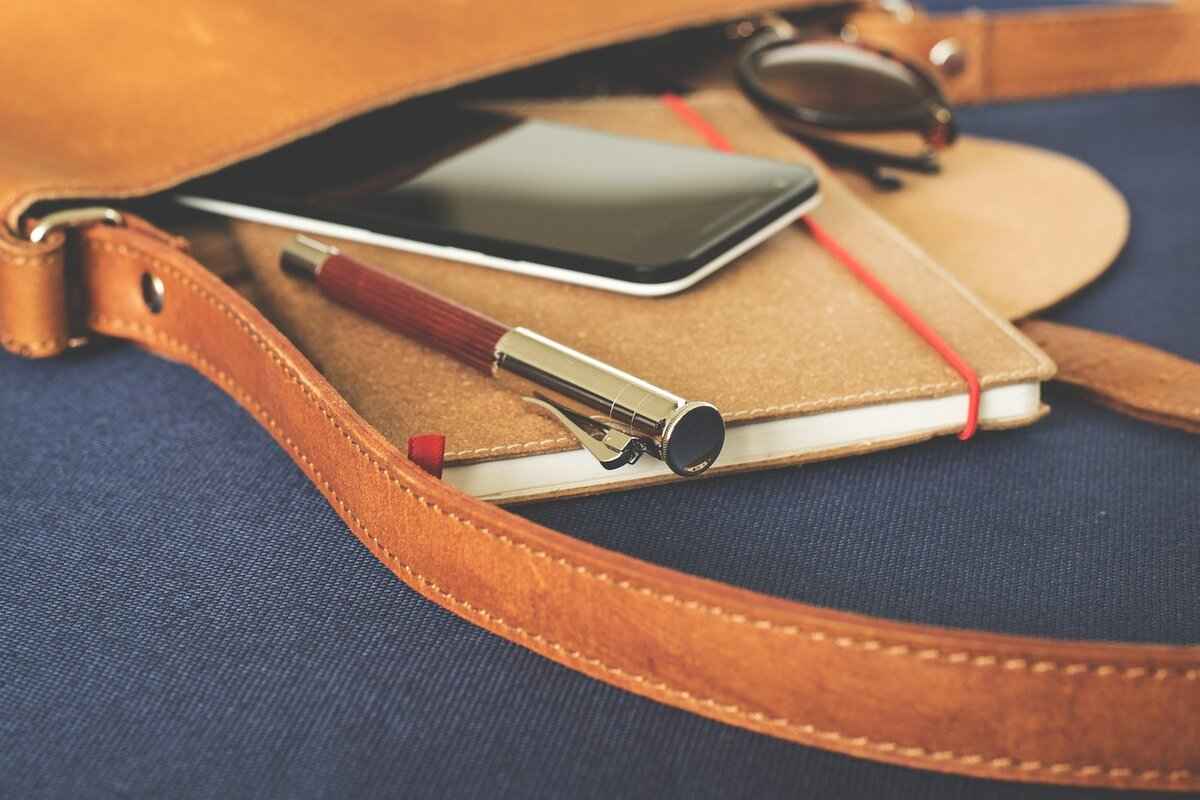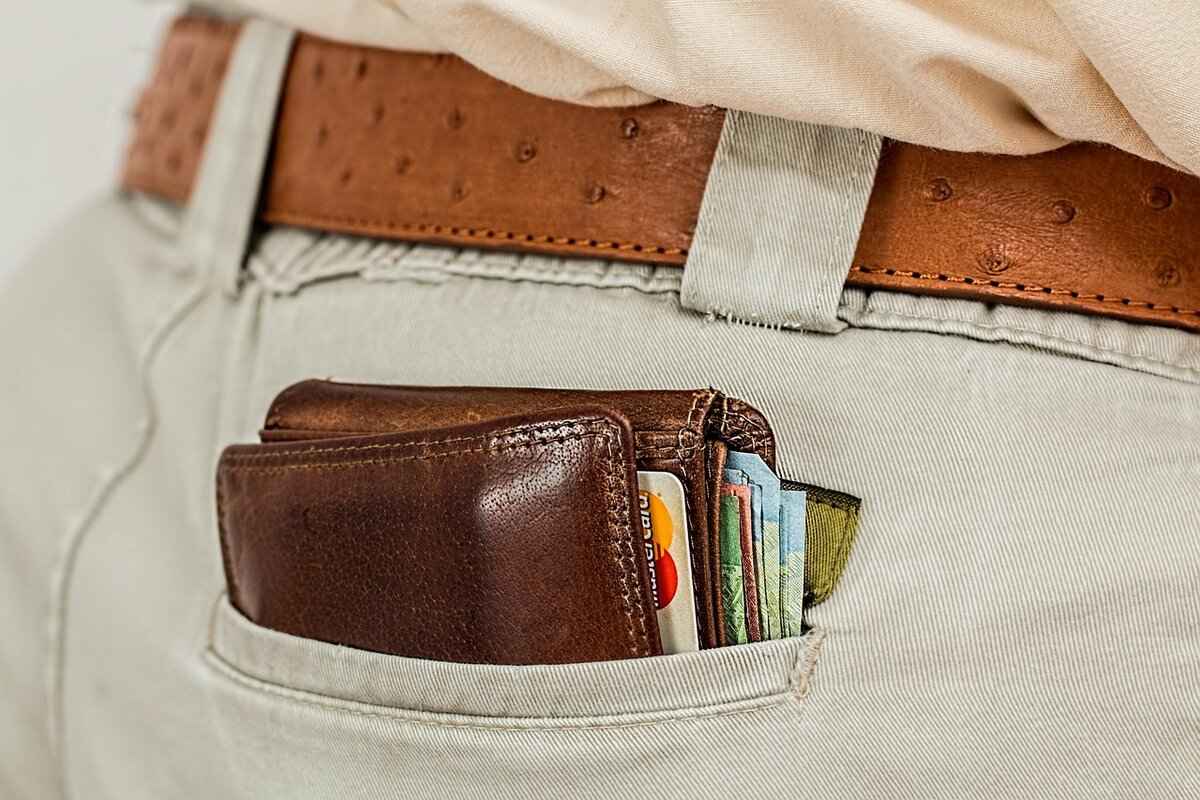Leather is a luxurious material that requires careful handling, especially when it comes to disinfection. In this article, we will explore effective methods for disinfecting leather items while preserving their quality. You will learn practical tips and techniques to maintain your leather’s integrity and appearance, ensuring it lasts for years to come.
Understanding Leather Types
Different types of leather, such as full-grain, top-grain, and bonded leather, require different care methods. Full-grain leather is the most durable and ages beautifully, while bonded leather, made from scraps, is less resilient. Understanding the specific characteristics of your leather can help you choose the right disinfecting approach. For instance, while full-grain leather can withstand more rigorous cleaning, suede requires a gentler touch.
Why Disinfect Leather?
Disinfecting leather is crucial to maintaining hygiene and preventing the growth of bacteria and mold. Leather items, especially those that are frequently used, can harbor germs and odors over time. Regular disinfection not only keeps your leather looking fresh but also prolongs its lifespan. It’s essential to take this step, especially for items like leather bags, shoes, and furniture that come into contact with various surfaces.
Common Leather Disinfectants
Not all disinfectants are suitable for leather. Common household disinfectants, such as bleach or alcohol-based wipes, can cause damage to leather surfaces. Instead, opt for products specifically designed for leather care or natural alternatives like vinegar and water solutions. Always check the label to ensure compatibility with your leather type.
DIY Disinfectant Solutions
Creating your own disinfectant solutions can be both effective and safe for leather. A simple recipe involves mixing equal parts of white vinegar and water. This solution can effectively kill germs while being gentle on the leather. Another option is to use a few drops of gentle dish soap mixed with water. Always ensure to test any solution on a small, inconspicuous area before full application.
How to Test Your Disinfectant
Before applying any disinfectant, it’s essential to test it on a small, inconspicuous area. This step helps you identify any adverse reactions, such as discoloration or texture changes. Apply a small amount of the disinfectant with a soft cloth and observe for at least 10 minutes. If no damage occurs, you can proceed with the disinfection process.
Step-by-Step Disinfection Process
An effective disinfection process ensures thorough cleaning without harming the leather. Start by removing any dust or dirt from the leather surface using a soft cloth. Next, apply your chosen disinfectant solution with a microfiber cloth, gently wiping the surface in circular motions. Avoid soaking the leather, as excess moisture can lead to damage. Finally, allow the leather to air dry completely away from direct sunlight or heat sources.
Post-Disinfection Care
After disinfecting, proper care is vital to restore and maintain leather’s natural oils and luster. Applying a leather conditioner can help replenish moisture and prevent cracking. Look for conditioners that are free from harsh chemicals and specifically formulated for the type of leather you own. Regular conditioning can enhance the longevity and appearance of your leather items.
Signs of Leather Damage
Recognizing signs of damage can help prevent further deterioration. Common indicators include cracking, fading, and stiffness. If you notice any of these signs after disinfection, it may be time to consult a professional cleaner or consider using more gentle cleaning methods in the future.
Professional Leather Cleaning Services
In some cases, professional cleaning may be necessary. If your leather items have significant stains or damage, seeking expert help can ensure they are cleaned without further harm. Professionals have access to specialized products and techniques that can restore your leather to its original condition.
Maintaining Leather Hygiene
Regular maintenance is key to keeping leather items hygienic. Wipe down your leather goods with a damp cloth regularly to remove dust and oils. Additionally, storing leather items in a cool, dry place can prevent mold growth. Consider using breathable dust covers for storage to keep them protected while allowing air circulation.
Frequently Asked Questions about Leather Disinfection
- Can I use alcohol to disinfect leather? – It’s best to avoid alcohol as it can dry out and damage leather.
- How often should I disinfect my leather items? – Regular use items should be disinfected every few weeks, while less frequently used items can be done quarterly.
- Is it safe to use baby wipes on leather? – Baby wipes can contain ingredients that may harm leather, so it’s better to use products specifically made for leather care.

Understanding Leather Types
Different types of leather require different care methods. Understanding the specific characteristics of your leather can help you choose the right disinfecting approach. Leather is a natural material that comes in various forms, each with its unique properties and maintenance needs. Here, we will explore the most common types of leather and how to care for them effectively.
- Full-Grain Leather: This is the highest quality leather, made from the top layer of the hide. It retains the natural grain and is known for its durability and breathability. To disinfect full-grain leather, use a mild soap solution and a soft cloth. Avoid harsh chemicals that can strip its natural oils.
- Top-Grain Leather: Slightly less durable than full-grain, top-grain leather has been sanded and treated to remove imperfections. While it is still high-quality, it requires careful cleaning. Use a gentle leather cleaner followed by a conditioner to maintain its luster.
- Corrected-Grain Leather: This type has been heavily processed to remove blemishes, making it less breathable. It is often treated with pigments and is easier to clean. A diluted alcohol solution can be used for disinfection, but it’s essential to follow up with a conditioner.
- Split Leather: Made from the lower layers of the hide, split leather is less expensive and not as durable. It is often used for suede products. For disinfecting, a damp cloth with mild soap is recommended, but avoid soaking it, as it can lead to damage.
- Exotic Leather: This includes leathers like snake, crocodile, and ostrich. Each has specific care requirements due to their unique textures and finishes. Generally, it’s best to use a specialized cleaner and conditioner designed for exotic leathers to avoid damage.
Recognizing the type of leather you own is crucial for proper care. Each type has its vulnerabilities and strengths, and using the wrong cleaning method can lead to irreparable damage. For instance, while full-grain leather ages beautifully, corrected-grain leather may not respond well to excessive moisture.
Additionally, environmental factors such as humidity and exposure to sunlight can affect leather’s condition. Regularly assessing the state of your leather items will help you determine when disinfection is necessary and which method to use.
In conclusion, understanding the various types of leather is essential for maintaining their quality and longevity. By adopting the right care methods tailored to each type, you can ensure that your leather items remain beautiful and functional for years to come.

Why Disinfect Leather?
Leather is a luxurious material, cherished for its durability and aesthetic appeal. However, it also requires proper care to ensure its longevity and hygiene. Disinfecting leather is a crucial aspect of maintaining its quality, especially in environments where it is frequently used, such as homes, offices, and vehicles. This section delves into the reasons why regular leather disinfection is essential.
- Prevention of Bacteria Growth: Leather items, especially those that come into contact with skin, can harbor bacteria. Regular disinfection helps eliminate these harmful microorganisms, reducing the risk of skin infections and other health issues.
- Mold and Mildew Prevention: Leather is susceptible to moisture, which can lead to mold and mildew growth. Disinfecting leather not only cleans the surface but also helps to inhibit the conditions that promote mold growth, preserving the integrity of the material.
- Odor Control: Over time, leather can develop unpleasant odors due to sweat, spills, and environmental factors. Disinfecting leather helps to neutralize these odors, keeping your items smelling fresh and clean.
- Enhancing Appearance: Regular disinfection can help maintain the appearance of leather items. Dirt and grime can accumulate on the surface, leading to a dull look. By disinfecting, you not only clean the leather but also restore its natural luster.
- Extending Lifespan: Proper care, including regular disinfection, can significantly extend the lifespan of leather products. By preventing damage from bacteria, mold, and dirt, you ensure that your leather remains in good condition for years to come.
- Allergen Reduction: Leather can trap allergens such as dust and pollen. Disinfecting helps to remove these allergens, creating a healthier environment, especially for individuals with allergies or respiratory issues.
Incorporating a routine disinfection process into your leather care regimen is not just about cleanliness; it’s about preserving the value and quality of your leather items. Whether it’s your favorite leather jacket, handbag, or furniture, understanding the importance of disinfection will help you maintain their beauty and functionality over time.
Ultimately, by prioritizing the disinfection of leather, you are investing in the longevity and health of your cherished items. This proactive approach ensures that your leather remains not only a stylish choice but also a hygienic one.

Common Leather Disinfectants
When it comes to maintaining the integrity of leather items, choosing the right disinfectant is crucial. Not all disinfectants are suitable for leather, and using the wrong product can lead to irreversible damage. In this section, we will explore various disinfectants commonly used, their effectiveness, and their compatibility with different types of leather.
- Alcohol-Based Disinfectants: Alcohol is a popular choice for disinfecting surfaces due to its effectiveness against a wide range of pathogens. However, it can be harsh on leather. While it may kill bacteria and viruses, it can also strip away natural oils, leading to dryness and cracking. If you choose to use an alcohol-based disinfectant, ensure it is diluted properly and test it on a small area first.
- Bleach Solutions: Bleach is a powerful disinfectant that can eliminate mold and mildew. However, it is not recommended for leather as it can cause discoloration and weaken the material. If you encounter a stubborn stain or mold on leather, it’s best to consult a professional rather than resorting to bleach.
- Vinegar Solutions: White vinegar is a natural disinfectant that can be effective against bacteria and odors. It is less harsh than alcohol and bleach, making it a safer option for leather. Mix equal parts of water and vinegar to create a mild solution. Always test on a hidden area to ensure no adverse reactions occur.
- Commercial Leather Cleaners: Many brands offer specialized leather cleaners that also provide disinfecting properties. These products are formulated specifically for leather, ensuring that they clean without causing damage. Look for cleaners that are pH-balanced and free from harsh chemicals.
- Soap and Water: For routine cleaning and light disinfection, a simple solution of mild soap and water can be effective. Use a damp cloth to wipe the surface, ensuring that excess moisture does not penetrate the leather. This method is safe for most leather types and helps maintain its natural oils.
Choosing the Right Disinfectant
When selecting a disinfectant for leather, consider the type of leather you are dealing with. For example, suede and nubuck are particularly sensitive and require special care. Always read labels and follow manufacturer instructions to avoid damaging your leather items.
Additionally, it’s essential to consider the intended use of the disinfectant. If you are disinfecting a frequently used item, such as a handbag or leather shoes, opt for milder solutions that will not compromise the leather’s integrity over time.
In summary, while there are various disinfectants available, not all are suitable for leather. Understanding the properties of each disinfectant and how they interact with leather is vital for maintaining your items’ quality and longevity. Always prioritize testing and proper application techniques to ensure the best results.

DIY Disinfectant Solutions
Creating your own disinfectant solutions can be both effective and safe for leather. With the right ingredients and methods, you can ensure your leather items remain clean and hygienic without compromising their integrity. This section provides detailed recipes and tips for crafting your own solutions at home.
When it comes to disinfecting leather, it’s important to use solutions that are gentle yet effective. Here are some popular DIY disinfectant recipes that you can easily prepare:
- Vinegar and Water Solution: Mix equal parts of white vinegar and water in a spray bottle. Vinegar is a natural disinfectant that can kill bacteria. Test it on a small area before full application.
- Rubbing Alcohol Solution: Combine 1 part rubbing alcohol with 2 parts water. This solution is effective for disinfecting and evaporates quickly, reducing the risk of water damage.
- Castile Soap and Water: Mix a few drops of liquid Castile soap with water. This gentle soap not only cleans but also has antibacterial properties.
- Essential Oil Blend: Add a few drops of essential oils such as tea tree or lavender to a vinegar or alcohol solution. These oils have natural antibacterial properties and leave a pleasant scent.
When crafting your own disinfectant, consider the following tips for effective use:
- Always test first: Before applying any solution, test it on a small, inconspicuous area of the leather to check for adverse reactions.
- Use a soft cloth: Apply the solution using a soft, lint-free cloth to avoid scratching the leather surface.
- Do not saturate: Avoid soaking the leather; instead, lightly dampen the cloth with the solution for application.
- Allow to dry: After cleaning, let the leather air dry naturally, away from direct sunlight or heat sources, which can cause drying and cracking.
Additionally, it’s crucial to maintain the leather’s natural oils after disinfection. Applying a leather conditioner after cleaning can help restore moisture and keep the leather supple.
By creating your own disinfectant solutions, you can ensure that your leather items are not only clean but also well cared for. These homemade solutions are not only cost-effective but also free from harsh chemicals that could potentially damage your leather goods.
In summary, DIY disinfectant solutions are a practical and safe way to maintain your leather items. With the right ingredients and techniques, you can effectively disinfect while preserving the quality and appearance of your leather.

How to Test Your Disinfectant
Before you start disinfecting your leather items, it’s crucial to ensure that the disinfectant you choose is safe for the material. Testing your disinfectant on a small, inconspicuous area is an essential step that can prevent potential damage to your leather. This section will provide you with a detailed guide on how to conduct this test effectively.- Choose the Right Location: Select a hidden area of the leather item, such as the underside of a flap, the back of a strap, or a seam. This ensures that any potential discoloration or damage will not be visible.
- Prepare the Disinfectant: If you’re using a commercial disinfectant, read the label carefully to understand its ingredients and recommended usage. For DIY solutions, ensure you follow the recipe accurately to maintain the right concentration.
- Apply a Small Amount: Using a cotton swab or a soft cloth, apply a tiny amount of the disinfectant to the chosen area. This minimizes the risk of widespread damage should the product react poorly with the leather.
- Observe the Reaction: Allow the disinfectant to sit for a few minutes, then check for any changes. Look for discoloration, texture changes, or any signs of damage such as peeling or cracking. It’s important to be patient during this step, as some reactions may take time to appear.
- Wipe and Assess: After the observation period, gently wipe the area with a clean, damp cloth to remove any excess disinfectant. Assess the area again for any adverse effects. If the leather looks unchanged, it is likely safe to proceed.
- Repeat if Necessary: If you notice any adverse reactions, do not use that disinfectant on your leather. Instead, consider testing a different product or a more diluted version of the same disinfectant.
Testing is not just a precaution; it is a vital step in maintaining the integrity of your leather items. Many disinfectants contain harsh chemicals that can strip the leather of its natural oils or cause fading. By taking the time to test, you can protect your investment and ensure that your leather remains in excellent condition.
In addition to testing, it’s also wise to stay informed about the specific type of leather you own. Different leathers, such as suede, nubuck, or full-grain, have unique characteristics and may react differently to various disinfectants. Always refer to manufacturer guidelines when available.
In summary, testing your disinfectant is a simple yet effective way to safeguard your leather items from potential damage. By following the steps outlined above, you can confidently disinfect your leather without compromising its quality.

Step-by-Step Disinfection Process
Disinfecting leather items requires a careful approach to ensure that the material remains intact and undamaged. Here, we provide a detailed, step-by-step guide for effectively disinfecting leather while preserving its quality.
- Gather Your Supplies: Before starting, collect all necessary materials. You will need a soft cloth, a mild soap (like castile soap), water, white vinegar, and a spray bottle for the disinfectant solution.
- Prepare the Disinfectant Solution: Mix equal parts of water and white vinegar in a spray bottle. This natural disinfectant is effective against germs and mold while being gentle on leather.
- Test the Solution: Before applying the solution to the entire item, it’s crucial to test it on a small, hidden area of the leather. This will help you ensure that the leather does not react negatively to the solution. Wait for a few minutes to observe any discoloration or damage.
- Dust and Wipe: Use a soft, dry cloth to dust off the leather item. Remove any surface dirt or debris before applying the disinfectant. This step is essential to prevent scratching the leather during the cleaning process.
- Apply the Disinfectant: Lightly spray the disinfectant solution onto the cloth (not directly on the leather) and gently wipe the surface of the leather item. Make sure to cover all areas, including seams and crevices, where bacteria may hide.
- Dry the Leather: After wiping, use a clean, dry cloth to remove any excess moisture. Leather should not be left wet, as this can lead to mold growth or damage.
- Condition the Leather: Once the leather has dried completely, apply a leather conditioner to restore moisture and protect the surface. This step is crucial as disinfecting can strip the leather of its natural oils.
- Store Properly: After cleaning and conditioning, store the leather item in a cool, dry place away from direct sunlight. This will help maintain its integrity and prevent any future damage.
By following these steps, you can effectively disinfect your leather items without compromising their quality. Regular disinfection is important, especially for frequently used items like bags and shoes, to ensure they remain hygienic and in good condition.

Post-Disinfection Care
After disinfecting your leather items, it is crucial to engage in proper care to ensure that the leather retains its natural oils and luster. Leather is a natural material that requires specific attention to maintain its beauty and durability. This section provides essential tips and techniques for post-disinfection care, helping you to preserve the integrity of your leather goods.
- Reconditioning the Leather: After disinfection, the leather may feel dry or stiff. To restore its suppleness, apply a quality leather conditioner. Look for products that contain natural oils, such as neatsfoot oil or jojoba oil, which help replenish lost moisture. Apply the conditioner evenly using a soft cloth, and allow it to absorb for at least 30 minutes.
- Regular Cleaning: To maintain the leather’s appearance, engage in regular cleaning. Dust and dirt can accumulate and dull the surface. Use a damp cloth to wipe down the leather, followed by a dry cloth to remove any excess moisture. Avoid using harsh chemicals that can strip the leather of its natural oils.
- Protection from Elements: Leather is susceptible to damage from water, sunlight, and heat. To protect your leather items, store them in a cool, dry place away from direct sunlight. Consider using a leather protector spray to add an extra layer of defense against moisture and stains.
- Avoid Overexposure: Limit the exposure of your leather items to extreme conditions. Excessive heat or humidity can lead to cracking or mold growth. When not in use, keep leather items in breathable fabric bags rather than plastic, which can trap moisture.
- Spot Treatment for Stains: In the event of spills or stains, act quickly. Blot the area with a clean, dry cloth to absorb excess liquid. For stubborn stains, use a leather-safe cleaner. Always test any product on a hidden area first to ensure it does not cause discoloration.
Monitoring Leather Condition: Regularly inspect your leather items for signs of wear or damage. Look for cracks, fading, or stiffness, which may indicate that the leather needs more intensive care. Catching these issues early can prevent more significant damage down the line.
Professional Care: If your leather items show signs of significant wear or damage, consider seeking professional cleaning services. Experts can assess the condition of your leather and provide specialized treatment that may be necessary for restoration.
In conclusion, post-disinfection care is essential for maintaining the beauty and longevity of your leather possessions. By following these care tips, you can ensure that your leather remains in excellent condition, preserving its natural oils and luster for years to come.

Signs of Leather Damage
Recognizing the signs of damage in leather is essential for maintaining its quality and longevity. Leather is a natural material that can be sensitive to various environmental factors and cleaning methods. When disinfecting leather items, it is crucial to be aware of potential indicators of harm that may arise during the process. Below are some common signs that your leather may have sustained damage:
- Cracking and Fading: One of the most noticeable signs of leather damage is cracking or fading of the surface. This often occurs when leather is exposed to harsh disinfectants or excessive moisture, which can strip away natural oils.
- Stiffness: If your leather item feels stiff or rigid, it may indicate that it has dried out. Over-disinfection can lead to a loss of flexibility, making the leather less comfortable to use.
- Discoloration: Changes in color, such as darkening or lightening, can signal damage. Disinfectants that are not suitable for leather can cause uneven staining or fading.
- Rough Texture: Leather should feel smooth to the touch. If you notice a rough or uneven texture, it may be a sign that the leather’s protective layer has been compromised.
- Odor: A persistent unpleasant smell can indicate that the leather has absorbed moisture or chemicals. This can lead to mold growth, which is detrimental to both the leather and your health.
- Peeling or Flaking: In severe cases, leather may begin to peel or flake. This is often the result of aggressive cleaning methods that strip away layers of the leather.
To prevent further deterioration, it is essential to address any signs of damage promptly. Regular inspection of your leather items can help you catch these indicators early, allowing you to take corrective measures before the damage becomes irreversible.
What Should You Do If You Notice Damage?
If you observe any of the above signs, consider taking the following steps:
- Recondition the Leather: Use a specialized leather conditioner to restore moisture and suppleness. This can help alleviate some of the stiffness and dryness.
- Avoid Harsh Chemicals: If you suspect that a disinfectant caused the damage, discontinue use immediately. Opt for gentler alternatives that are specifically designed for leather care.
- Consult a Professional: If the damage is extensive, it may be best to seek the help of a professional leather cleaner. They have the expertise and tools to repair and restore your leather items effectively.
By being vigilant and proactive in recognizing the signs of leather damage, you can ensure that your leather items remain in excellent condition, extending their lifespan and maintaining their aesthetic appeal.

Professional Leather Cleaning Services
When it comes to maintaining the quality and longevity of leather items, professional cleaning services can be an invaluable resource. While many leather care tasks can be performed at home, certain situations call for the expertise of professionals. This section delves into the circumstances under which you should consider seeking professional assistance for disinfecting leather items.
First and foremost, heavy staining or damage can be a clear indicator that professional intervention is necessary. If your leather item has been exposed to substances like ink, oil, or food that have left behind stubborn stains, attempting to treat these on your own may lead to further damage. Professionals have access to specialized cleaning solutions and techniques that can effectively remove these stains without compromising the integrity of the leather.
Furthermore, deep-seated odors that persist despite regular cleaning may warrant professional help. Leather can absorb smells from various sources, including smoke, pets, or mildew. While DIY methods may provide temporary relief, a professional cleaning can thoroughly eliminate odors trapped within the leather fibers, restoring the item to its original condition.
In addition, if your leather items have not been cleaned or maintained for an extended period, they may require a professional deep clean. Over time, dirt, oils, and grime can accumulate, leading to a dull appearance and potential degradation of the material. A professional service can provide a comprehensive cleaning that rejuvenates the leather, ensuring it remains supple and vibrant.
Specialized leather types also necessitate professional cleaning services. Exotic leathers, such as suede or nubuck, require unique care that may not be achievable with standard cleaning methods. Professionals are trained to handle these materials delicately, using appropriate products and techniques to avoid damage.
Moreover, if you are unsure about the appropriate cleaning products or methods for your leather items, consulting with a professional can save you from potential mishaps. They can provide tailored advice based on the specific type of leather and its condition, ensuring optimal care.
Lastly, if your leather item has significant sentimental or monetary value, investing in professional cleaning can be worthwhile. Professionals not only ensure that your item is cleaned safely but also help maintain its value over time.
In conclusion, while regular maintenance and DIY cleaning methods are essential for leather care, there are specific situations where professional cleaning services become necessary. Whether dealing with stubborn stains, persistent odors, specialized leather types, or valuable items, seeking expert help can ensure that your leather remains in excellent condition for years to come.

Maintaining Leather Hygiene
Leather items, whether they be bags, shoes, or furniture, require consistent care to ensure they remain in optimal condition. Regular maintenance is essential not only for preserving the appearance of leather but also for maintaining its hygiene. This section offers practical tips on how to maintain leather hygiene between disinfecting sessions, ensuring your items stay clean and fresh.
- Regular Dusting: Dust can accumulate on leather surfaces, leading to potential damage. Use a soft, dry cloth to gently wipe down your leather items weekly. This simple step helps remove dirt and prevents buildup.
- Conditioning: Leather can dry out over time, which may lead to cracks and creases. Use a high-quality leather conditioner every few months to keep the leather supple. This not only maintains its appearance but also creates a barrier against dirt and moisture.
- Spot Cleaning: For any spills or stains, act quickly. Blot the area with a clean, dry cloth to absorb excess moisture. If necessary, use a mild soap solution (like diluted dish soap) on a damp cloth to gently clean the affected area, followed by a dry cloth to remove any soap residue.
- Storage Tips: When storing leather items, ensure they are kept in a cool, dry place away from direct sunlight. Use dust bags for bags and shoes to protect them from dust and environmental factors. Avoid overcrowding, which can cause creases and distortions.
- Air Circulation: Allow leather items to breathe. Avoid sealing them in plastic bags, as this can trap moisture and lead to mold growth. Instead, store leather items in breathable fabric covers.
In addition to these practices, consider using leather-safe disinfectant sprays between deep cleanings to maintain hygiene. Always test any product on a hidden area first to ensure it does not affect the color or texture. By implementing these maintenance tips, you can significantly enhance the longevity and cleanliness of your leather items.
Remember, the key to maintaining leather hygiene lies in a combination of regular care, proper storage, and immediate attention to spills and stains. By following these guidelines, you can enjoy your leather items for years to come, keeping them looking as good as new.

Frequently Asked Questions about Leather Disinfection
Disinfecting leather items can raise several questions and concerns, especially for those who want to maintain their quality while ensuring hygiene. Below are some of the most common queries regarding leather disinfection, along with comprehensive answers to provide clarity.
- Can I use regular household disinfectants on leather?
No, not all household disinfectants are suitable for leather. Many contain harsh chemicals that can damage the finish or texture of the leather. It is essential to choose products specifically formulated for leather or to create your own safe solutions.
- How often should I disinfect my leather items?
The frequency of disinfection depends on usage. For items that are frequently handled, like handbags or wallets, consider disinfecting them every few weeks. For less frequently used items, such as leather furniture, a monthly disinfection may suffice.
- What are the best DIY disinfectant solutions for leather?
A simple and effective DIY disinfectant can be made using a mixture of water and white vinegar or rubbing alcohol. A common ratio is one part vinegar or alcohol to three parts water. Always remember to test on a small area first.
- How can I tell if my leather is damaged after disinfection?
Signs of damage include discoloration, stiffness, cracks, or a dull appearance. If you notice any of these changes, it may indicate that the disinfectant used was too harsh or that the leather was not properly conditioned after cleaning.
- Is it necessary to condition leather after disinfecting?
Yes, conditioning is crucial after disinfecting. Disinfectants can strip leather of its natural oils, leading to dryness and potential cracking. Using a leather conditioner helps restore moisture and maintain suppleness.
- Can I use essential oils for disinfecting leather?
While some essential oils have antibacterial properties, they should be used with caution. Dilution is key, and it’s advisable to test the oil on a small area first. Additionally, avoid oils that are too acidic or that may stain.
- Are there specific leather types that require special care?
Yes, different types of leather, such as suede, nubuck, and patent leather, have unique characteristics that require tailored care. For instance, suede and nubuck should not be exposed to moisture, while patent leather can be wiped with a damp cloth.
- What should I do if I accidentally damage my leather while disinfecting?
If you suspect damage, the first step is to stop using the item. Depending on the severity, you may need to consult a professional leather cleaner who can assess the damage and recommend appropriate repairs.
This FAQ section aims to address the most pressing concerns regarding leather disinfection. By understanding the best practices and potential pitfalls, you can ensure that your leather items remain both hygienic and in excellent condition.
Frequently Asked Questions
- Can I use regular household cleaners on leather?
No, using regular household cleaners can damage leather. It’s best to stick to products specifically designed for leather care to avoid harm.
- How often should I disinfect my leather items?
It depends on usage, but a good rule of thumb is to disinfect leather items every few months or whenever they appear soiled or have been exposed to germs.
- What homemade disinfectant is safe for leather?
A simple solution of equal parts water and white vinegar can effectively disinfect leather without causing damage. Always test it on a small area first!
- How can I tell if my leather is damaged?
Signs of damage include dryness, cracking, or discoloration. If you notice any of these, it might be time to reassess your cleaning methods.
- Should I seek professional help for leather cleaning?
If your leather items are heavily stained or if you’re unsure about the cleaning process, seeking professional help is a wise choice to ensure they are treated properly.














